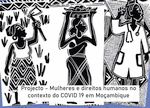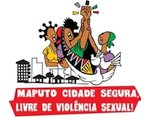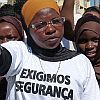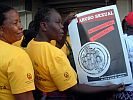Abortion Related Morbidity and Mortality
Fernanda Machungo
Published in: Outras Vozes, Suplemento do boletim n° 3, July 2003
Africa has the highest abortion-related mortality ratio in the world; it is estimated that roughly 13% of maternal deaths are due to abortion complications. In addition, each year millions of women end up suffering from acute and chronic complications, such as pelvic pain, secondary infertility and other long-term sequelae as the result of unsafe abortions.
Worldwide, different studies have previously estimated that “illegal” or “clandestine” abortions have accounted for 25% of maternal deaths, resulting in 115,000-205,000 such deaths a year (300-550 a day). More recently, complications arising from “unsafe abortion” are calculated to be responsible for 78,000 deaths a year. In Africa, it has been estimated that over 5 million women undergo unsafe abortions and that a significant proportion of them die from abortion-related causes.
In industrialised countries, where parent-adolescent communication about sexuality has increased substantially, and where contraceptive counselling and abortions are readily available, the problem of unwanted adolescent pregnancies is less common, and fertility rates have reached an all-time low. The situation in low-income countries and in Africa in particular is, however, very different and there are conflicting tendencies. On the one hand, traditional society and its values and controls are being undermined, especially in urban areas, and adolescents are increasingly adopting “western” culture, including involvement in freer sexual relations. On the other hand, sexual education in schools is poor or non-existent, and since sexuality is still a taboo subject, parents do not discuss it with their teenage children.
In addition, knowledge about contraception is very limited, and even when there is a degree of awareness many adolescents nevertheless engage in unprotected sexual relations. Sometimes they do not attend family planning services because they may fear the judgemental attitude of the health staff or may be afraid of being recognised and identified as having started to have sex. Consequently, unwanted adolescent pregnancy is frequent and many adolescent girls end up resorting to abortion.
Throughout history, women with unintended and undesired pregnancies have taken steps to solve the problem, even at the risk of their health, future fertility, social standing or even their lives. In many low-income countries, where prevailing legislation prohibits the termination of a pregnancy, women are obliged to seek illegal abortionists for this purpose and to undergo the procedure under unsafe conditions. According to the WHO definition, an unsafe abortion is the termination of pregnancy either by persons lacking the necessary skills or in an environment lacking the minimal medical standards, or both.
Abortion is an important cause of maternal morbidity and mortality. Uneducated and with poor access to appropriate family planning services, adolescents frequently have no other choice but to free themselves of an unwanted pregnancy by an unsafe abortion. A study in Tanzania has shown that over half the patients who had had an unsafe abortion were below the age of 20. Elsewhere it has been shown that the 15-20 age group accounts for as much as 68% of abortion complications treated in selected hospitals. Young, single or separated young women tend to be most at risk of severe complications of unsafe abortions.
Unsafe abortion, although being one of the most easily preventable cause of maternal death, is one of the most neglected health and human rights problems in the world today. It was not even acknowledged as an issue until 1994, when the Cairo ICPD first emphasized gender equality and women’s reproductive and sexual rights and recognized that abortion was a health problem that needed to be addressed in all its aspects.
In Mozambique, the prevailing legislation contained in the Penal Code still reflects the values of a conservative, authoritarian Roman Catholic influenced colonial power in the late 19th century. It stipulates that abortion under any circumstances is forbidden, and penalises both the patient and the abortionist. The circumstances after independence in the late twentieth century, however, were very different: a secular state that promoted women’s rights and gave priority to the welfare and well-being of the ordinary citizen. One manifestation of these concerns was the growing acceptance that abortion should be allowed under certain circumstances, with particular emphasis on the safety of the procedure.
Consequently, in 1985 the Ministry of Health issued guidelines stating that women could apply for the interruption of a pregnancy in the Hospital Central do Maputo if this was due to failed contraceptive measures. Subsequently, in the light of growing evidence of the high rates of maternal morbidity and mortality related to unsafe abortions, interpretation of the guidelines became more liberal. Pregnancy interruption on demand was provided also on socio-economic grounds. As a result today, virtually any pregnancy up to the 12th week of gestation can be interrupted (but only in three hospitals in Maputo city, and in a few settings outside the capital), if there is a written request by the woman or the couple. Unmarried adolescents aged 18 or less must have the consent of an adult. To some extent, this significant change in attitude reflects findings elsewhere, that the greater insight into the problem of unwanted pregnancies provided by quantitative and qualitative research helps weaken the tendency to condemn actions to solve this problem without loss of women’s lives.
So, in Maputo, even before the ICPD, women started to have access to safe abortion, although hospital fees may still constitute an obstacle to access. Nonetheless, also in Maputo, for many reasons, such as lack of money to pay the abortion fee, fear of being recognized in the health facilities, fear of judgemental attitudes of the health staff, lack of access to hospital abortion services either due to the absence of these services in many hospitals near the community (they are currently only available in three hospitals in the capital) or lack of information, many women are still forced to turn to dangerous and unsafe methods to obtain an abortion.
Although there is no reliable information on the magnitude of the unsafe abortion problem in Mozambique, the health consequences are extremely serious.
Some hospital-based studies on maternal mortality have shown that 8 to 11% of the maternal deaths during the period 1990-1999 were due to abortion complications. In 2001 and 2002, the contribution of abortion on the maternal mortality was 6.6% and 4.6% respectively, showing that women are still dying due to abortion even in Maputo where a safe abortion is available.
However, these figures are merely the tip of the iceberg, as they do not include women who did not suffer immediately recognisable complications, or those who did but did not seek hospital treatment, many of whom eventually died.
Out of 148 women treated for severe abortion complications, over that period, 38 (26%) died 2 to 24 hours after admission. This may be to the fact that women who undergo an unsafe abortion, initially often tend to conceal abortion complications and seek medical care only as a last resort.
The most common immediate complications of unsafe abortions identified in various African studies are: incomplete abortion, tears in the cervix, haemorrhage, sepsis, uterine perforation and peritonitis. The medium and long-term consequences include chronic pelvic pain, ectopic pregnancy and infertility. Although less studied, in many instances the social consequences – such as family disruption and various forms of ostracism – may be at least as important, not to mention the woman’s vulnerability to legal proceedings.
Haemorrhage and sepsis were the most common abortion complications and all the women admitted to the emergency gynaecology ward, in the Maputo Central Hospital, with abundant haemorrhage and signs of sepsis died shortly after hospital admission. Shortage of blood was the main cause of death among the cases presenting with heavy vaginal bleeding. Peritonitis, the most serious complication, was the main reason for surgical intervention. These findings call attention to the need for adequate blood and antibiotic supplies in the HCM.
As a major contributor to hospital-based maternal mortality and morbidity and their management, unsafe abortion ends up creating an extra burden for the already inadequate public expenditure on health.
It is predominantly young, poor and uneducated women who have unsafe abortions, adding yet another violation to their long list of unmet rights, and one that can have serious consequences for their health and even life. Among this group of women in particular, the unwanted pregnancies themselves reflect yet another unfulfilled right, the right to contraception.
Adolescents today reach puberty at a younger age than previous generations and they also marry later. They are thus more likely to start having sexual relations before marriage, thereby running a greater risk of an unwanted pregnancy and sexually transmitted diseases. Surveys in six African countries report that between one fourth and one half of first births to women aged 15 to 19 were unintended. In these settings, an unintended pregnancy often ends in an abortion. Hospital-based studies carried out in Zaire and Cameroon also showed that adolescents accounted for a very high proportion of all abortion-related complications.
The higher teenage risk of pregnancy-related death is not only due to their age, but also to the fact that such births tend to be their first, which are more risky than subsequent ones.
A hospital-based study, in Maputo Central Hospital revealed that the majority of women who die from unsafe abortion were significantly younger and less likely to have a stable relationship. They were also at a disadvantage as far as schooling, housing and household size are concerned, and earned lower wages. The percentage of teenage women undergoing an unsafe abortion was close to 38% and in a similar study in Nigeria this proportion was 50%. Several other studies on unsafe abortion in Africa show the same age profile. For instance, in Nigeria, it was found that one third of secondary school girls had had an abortion and more than half the women having unsafe abortion, in Dar-Es-Salaam, were under 20.
The fact that education is a significant factor in knowledge and use of contraceptives was clearly reflected in Maputo, where it was seen that women who have unsafe abortions belonged to the low socio-economic stratum and consequently were the ones who got severe complications. The low socio-economic status among women who get severe complications from illegal abortion has been demonstrated also in Nigeria, where lack of education and information on contraceptives were also significant.
Since women who perform unsafe abortion tend to be younger, their limited schooling is in part a reflection of their age but it probably also reflects a social heritage of high illiteracy rates, particularly among women. This may aggravate ignorance of the biological issues surrounding sexuality, with parents the least informed category.
Another aspect of the problem is the effect of unwanted and undesired pregnancies on girls and women who are unable to obtain the abortions they desire. At the very least, this situation implies that young girls are forced to drop out of school with long-term consequences for the country’s gender equity efforts, as well as for the well being of the children of an unmarried and/or uneducated mother. Data from the country’s 1997 Demographic and Health Survey indicate that 17% of adolescent girls aged 15-19 years already have one child and each year they account for approximately 17% of all births in the capital city, Maputo.
A major but unquantifiable indirect cost of an unsafe abortion resulting in death is the serious effect the loss of a mother, female head of household, or older sister can have on the surviving family members. In rural areas it is the woman who does most of the agricultural work, and among the urban poor it is the women who are most likely to undertake the informal street trade that guarantees the family’s day-to-day survival. The mother tends to give more priority to the educational, nutritional and health care needs of children and the loss of such a key individual can have major adverse effects on the well being of the next generation. Older sisters also invariably have important production and child care responsibilities. Finally, both an unintended pregnancy and the various outcomes of an unsafe abortion can have serious consequences for the education of school-age girls, with all the implications for the future well being of their children and the country’s efforts to promote greater gender equity.
Abortion legislation should be reviewed in order to make available a safe termination of unwanted pregnancies to women who need it. The existence of abortion services should be disseminated through health education campaigns that target the women most at risk of an unwanted pregnancy. The fee charged for a safe pregnancy interruption should not be an obstacle to seeking such an interruption. Furthermore, appropriate services for treating cases of severe morbidity should be organised, in order to reduce both maternal mortality and the permanent ill effects of unsafe abortions in women surviving such abortions.







 Information in English
Information in English



















